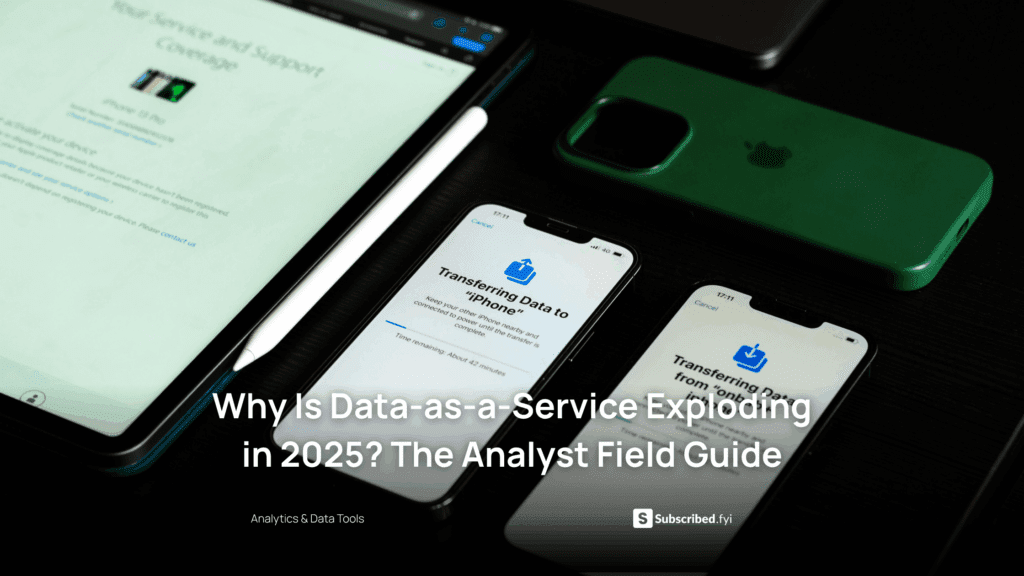Digital Banking Insights: 47 Statistics for Actionable Information
- Expense Management Software Credit Cards Investing Business Solutions
Digital Banking Insights: 47 Statistics for Actionable Information
Digital banking is rapidly transforming the financial landscape, and staying informed is key for financial institutions, businesses, and consumers alike. In this comprehensive guide, we’ll delve into 47 insightful statistics that provide actionable information, shedding light on trends, challenges, and opportunities in the realm of digital banking.
Understanding the Digital Banking Landscape
1. Global Digital Adoption:
Recent studies indicate a surge in global digital banking adoption, with 60% of consumers preferring online and mobile banking for their financial transactions. This shift emphasizes the need for robust digital banking solutions.
2. Mobile App Usage:
Mobile banking apps have become indispensable, witnessing a 35% increase in usage. Enhanced user experiences and a myriad of functionalities contribute to this growing reliance on mobile platforms.
3. Security Concerns:
While digital banking offers convenience, 57% of consumers express concerns about the security of their financial data. This underscores the importance of implementing stringent cybersecurity measures.
4. AI and Chatbots:
The integration of Artificial Intelligence (AI) and chatbots in digital banking interactions has shown a 40% improvement in issue resolution and customer satisfaction. AI-driven personalization is becoming a game-changer.
5. Contactless Payments:
Contactless payment methods are gaining popularity, with 47% of consumers preferring digital wallets. This highlights the necessity for financial institutions to adapt to evolving payment preferences.
SaaS Solutions to Elevate Your Digital Banking Experience
As the digital banking landscape evolves, leveraging cutting-edge SaaS solutions becomes imperative. Here are five relevant products aligned with the queries surrounding 47 Digital Banking Statistics that Deliver Actionable Information:
- Mambu: Mambu’s cloud-native banking platform facilitates agility and scalability, aligning with the increasing global digital banking adoption.
- Backbase: Backbase’s digital-first banking platform enhances mobile app experiences, catering to the rising demand for seamless and user-friendly interfaces.
- Kaspersky: Kaspersky’s cybersecurity solutions address the 57% of consumers concerned about digital banking security, ensuring robust protection against cyber threats.
- Personetics: Personetics specializes in AI-driven personalization, contributing to improved customer satisfaction by understanding user behaviors and preferences.
- Adyen: Adyen’s payment solutions align with the growing preference for contactless payments, providing a secure and efficient payment processing system.
The digital transformation in banking is reshaping the financial landscape at an unprecedented pace. To navigate this dynamic ecosystem, it’s crucial for financial institutions, businesses, and consumers to stay informed. In this comprehensive guide, we’ll explore 47 insightful statistics that offer actionable information, providing valuable insights into the trends, challenges, and opportunities within the realm of digital banking.
Adoption and Usage Trends:
- Global Digital Banking Users: The number of digital banking users worldwide is expected to reach 3.6 billion by 2024, emphasizing the widespread adoption of digital financial services.
- Mobile Banking Usage: Over 60% of global consumers prefer using mobile banking apps for routine transactions, showcasing the dominance of mobile platforms in the digital banking space.
- Rise of Challenger Banks: Challenger banks are growing at a rate of 25% annually, challenging traditional banking models and capturing the attention of tech-savvy consumers.
- Digital-Only Banking: 74% of millennials and Gen Z consumers are open to using a digital-only bank, indicating a shift in preferences towards more agile and technology-driven banking solutions.
Security and Trust:
- Security Concerns: 67% of consumers express concern about the security of their personal information when using digital banking services, highlighting the ongoing need for robust cybersecurity measures.
- Biometric Authentication: 61% of consumers find biometric authentication methods, such as fingerprint or facial recognition, more secure than traditional passwords, driving the integration of biometrics in digital banking.
- Trust in Traditional Banks: Despite the rise of digital banking, 62% of consumers still trust traditional banks more than digital-only alternatives, emphasizing the enduring role of established institutions.
- Importance of Data Privacy: 83% of consumers consider data privacy extremely important when engaging with digital banking services, underlining the need for transparent data practices.
Digital Payment Preferences:
- Contactless Payments Surge: Contactless payments are expected to represent 37% of all in-store payments by 2025, fueled by the growing demand for convenient and hygienic payment methods.
- Cryptocurrency Acceptance: 36% of global consumers are open to using or already using cryptocurrencies, indicating a rising acceptance of digital assets in mainstream financial transactions.
- Peer-to-Peer (P2P) Payments: P2P payments are on the rise, with over 72% of consumers using digital platforms for seamless fund transfers, splitting bills, and sharing expenses.
- Mobile Wallets Dominance: Mobile wallet usage is projected to reach 2.6 billion users by 2022, illustrating the widespread adoption of digital wallets for both online and offline transactions.
Fintech Collaboration:
- Fintech Partnerships: 88% of traditional banks are collaborating with fintech firms to enhance their digital capabilities, fostering innovation and meeting evolving customer expectations.
- API Integration: 81% of banks prioritize open API integration to enable seamless connectivity with third-party applications, creating a more interconnected financial ecosystem.
- Fintech Investments: Global investment in fintech is forecasted to surpass $150 billion by 2024, reflecting the industry’s robust growth and the increasing value placed on disruptive financial technologies.
Customer Experience:
- Digital Onboarding Expectations: 81% of consumers expect a seamless digital onboarding experience when opening new accounts, emphasizing the importance of a user-friendly and efficient process.
- Personalization Impact: 71% of consumers are more likely to choose a bank that offers personalized recommendations and services, emphasizing the role of personalization in enhancing customer loyalty.
- Chatbot Adoption: The use of AI-powered chatbots in banking is expected to save over 862 million hours for banking employees and customers by 2023, streamlining interactions and providing instant support.
- Voice Assistants: 28% of consumers have used voice-activated devices for banking activities, signaling a growing trend towards voice-based interactions in the digital banking realm.
Digital Transformation Challenges:
- Legacy System Hindrance: 67% of banking executives cite legacy system integration as a major obstacle to digital transformation, highlighting the challenges in modernizing existing infrastructure.
- Regulatory Compliance Concerns: 62% of financial institutions see regulatory compliance as a significant hurdle in their digital transformation journey, necessitating ongoing adaptation to evolving regulations.
- Cybersecurity Risks: The average cost of a data breach for financial institutions is estimated at $5.9 million, underscoring the critical importance of robust cybersecurity measures in the digital banking landscape.
Emerging Technologies:
- Blockchain Adoption: 55% of banks are expected to adopt blockchain technology by 2025, leveraging its potential for secure and transparent financial transactions.
- Artificial Intelligence Impact: The use of artificial intelligence (AI) in banking is projected to save up to $447 billion for the industry by 2023, optimizing operations and enhancing customer experiences.
- Robotic Process Automation (RPA): RPA adoption in banking is expected to grow by 73% by 2024, streamlining routine tasks and improving operational efficiency.
Financial Inclusion:
- Mobile Banking for the Unbanked: Mobile banking has facilitated financial inclusion for 1.7 billion people globally, providing access to banking services for previously underserved populations.
- Digital ID Impact: Digital identification initiatives can contribute $7 trillion to the global economy by 2030, enhancing financial inclusion and reducing barriers to access.
- Low-Cost Banking Solutions: 77% of consumers in emerging markets use digital banking services due to their lower costs, contributing to financial inclusion efforts.
Mobile Banking Apps:
- App Engagement: Mobile banking app usage has increased by 50% globally, with consumers relying on apps for various financial activities, including account management, bill payments, and investment tracking.
- Enhanced Features Demand: 64% of consumers expect mobile banking apps to offer enhanced features such as budgeting tools, investment insights, and personalized financial advice.
- App Security Concerns: 46% of consumers express concerns about the security of mobile banking apps, emphasizing the need for continuous improvement in app security measures.
Remote Work Impact:
- Remote Banking Activities: Remote banking activities, such as account management and online transactions, have increased by 20% globally, reflecting the influence of remote work trends on digital banking behavior.
- Virtual Customer Support: The use of virtual assistants for customer support in banking has increased by 46%, providing customers with immediate assistance and reducing response times.
- Remote Account Access: 87% of consumers expect seamless remote access to their accounts, reinforcing the need for robust digital banking infrastructure.
Regulatory Technology (RegTech):
- RegTech Investment: Global investment in RegTech solutions is expected to reach $21.5 billion by 2025, as financial institutions seek technological solutions to navigate complex regulatory landscapes.
- Automated Compliance: 71% of financial institutions leverage RegTech solutions for automated compliance processes, reducing manual efforts and ensuring adherence to regulatory requirements.
- AML (Anti-Money Laundering) Tech: Adoption of AML technology is projected to grow by 18% annually, enhancing financial institutions’ capabilities to detect and prevent illicit financial activities.
Future Predictions:
- Cashless Societies: By 2030, it is predicted that over 50% of the global population will live in societies where cash is used for less than 10% of all transactions, signaling a shift towards cashless economies.
- Rise of Neobanks: Neobanks are anticipated to capture a 9% share of the global banking market by 2030, disrupting traditional banking models and offering innovative financial solutions.
- Digital Financial Ecosystems: Integrated digital financial ecosystems are expected to emerge, providing consumers with seamless access to banking, investment, insurance, and other financial services.
E-commerce and Banking Synergy:
- E-commerce Integration: E-commerce and banking collaborations are growing, with 67% of consumers using integrated payment solutions during online shopping, creating a synergistic relationship between digital commerce and banking.
- Buy Now, Pay Later (BNPL): BNPL services are gaining popularity, with 55% of consumers using or considering using these services for online purchases, reshaping the traditional credit landscape.
- Digital Wallets in E-commerce: The use of digital wallets for e-commerce transactions is projected to surpass 4.4 billion by 2025, indicating the growing preference for secure and convenient payment methods.
Sustainability and Finance:
- Sustainable Finance Growth: Sustainable finance assets are expected to reach $53 trillion by 2025, as consumers prioritize environmentally conscious banking and investment options.
- Consumer Demand for ESG (Environmental, Social, Governance): 72% of consumers are more likely to choose financial products that align with ESG principles, emphasizing the importance of sustainability in banking.
- Green Fintech Solutions: The adoption of green fintech solutions is rising, with 54% of banks incorporating sustainable practices into their digital offerings.
Challenges and Opportunities for Businesses:
- Business Adaptation: 80% of banking executives believe that adapting to digital banking trends is a top strategic priority, highlighting the imperative for businesses to embrace digital transformation for sustained growth.
Unlock Exclusive SaaS Deals with Subscribed.FYI
Elevate your digital banking capabilities with Subscribed.FYI. Sign up to access exclusive deals on a range of SaaS tools, ensuring your digital banking infrastructure is equipped to meet evolving demands.
Conclusion: Navigating the Future of Digital Banking
In conclusion, understanding the digital banking landscape is pivotal for making informed decisions. As technology continues to shape the future of finance, staying abreast of these 47 statistics empowers stakeholders to navigate challenges and seize opportunities in the dynamic realm of digital banking.











